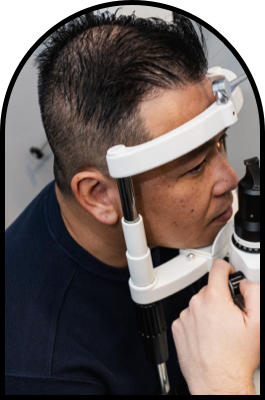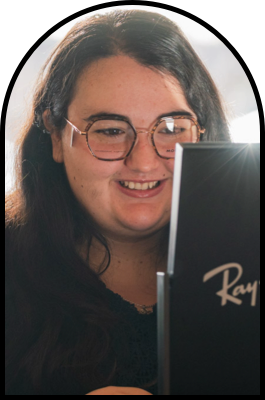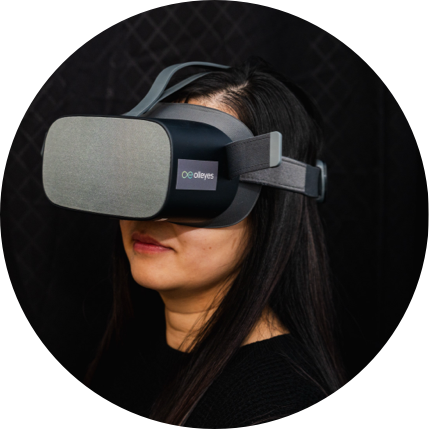Strabismus, or crossed eyes, is a common condition that causes the eyes to point in different directions, giving the appearance that a person is looking in two directions at once. There are plenty of different types of strabismus, and fortunately, there may be an answer: vision therapy.
Vision therapy aims to strengthen the connection between the eyes and the brain. When strabismus is caught early on in life, vision therapy can help children develop the skills needed to effectively move their eyes in unison. For adults, vision therapy may be able to cure strabismus, but it does depend on how strictly they follow their therapy routine.
What Is Strabismus?
When trying to focus on something, your eyes carefully coordinate with one another. This is built off the visual skills you develop as you grow. However, this is not always flawless. Many people experience a condition called strabismus.
Strabismus is a visual disorder where the eyes do not properly align with one another when trying to look at an object. Instead of the eyes working in unison, one eye struggles to aim. It drifts, wanders, or simply doesn’t respond properly. This condition is commonly referred to as “crossed eyes.”
This misalignment can be constant or intermittent, which can be frustrating to deal with. But strabismus is not just a cosmetic issue, it can:
- Affect your binocular vision and depth perception
- Increase the risk of developing lazy eye
- Cause loss of vision in the misaligned eye
This is why a proper diagnosis is so essential. Whether you are an adult dealing with crossed eyes or have a child dealing with this condition, the diagnosis is key. This way, you can intervene sooner rather than later to begin treatment.
The Different Types of Strabismus
It’s important to note that there is more than just one type of strabismus. The 3 key types include:
- Accommodative esotropia, which often develops due to undiagnosed or uncorrected hyperopia (farsightedness).
- Intermittent exotropia, where a person is unable to properly coordinate both eyes to simultaneously work together.
- Infantile esotropia, when crossed eyes develop within the first 6 months of a child’s life.
However, this is not the only factor that determines your unique condition. The direction of the turn of the eye plays a role as well.
Strabismus & Eye Turns
Strabismus can primarily be broken down into 4 different eye turns. This refers to the direction the eye is aiming:
- Esotropia, where one eye turns inward
- Exotropia, where one eye turns outward
- Hypertropia, where one eye turns upward
- Hypotropia, where one eye turns downward
In some cases, the eye-turning can be “unilateral,” meaning that it always affects the same eye. In other cases, the eye-turning may be “alternating,” where the eyes will switch between which one is turning.
So if you are dealing with strabismus, what do you do? Vision therapy can be an effective solution.
What Is Vision Therapy?
Vision therapy is a customized program designed to improve, and correct, specific vision problems and skills. Unlike glasses, contacts, and surgery—all of which aim to treat refractive errors—vision therapy aims to “treat” the visual system itself.
This is about more than just your eyesight, this treatment is about training the eyes and brain to properly work together and coordinate. Vision therapy involves a series of exercises designed to:
- Improve eye movement control
- Enhance eye-focusing abilities
- Strengthen eye coordination
Through these exercises, your optometrist can help retrain your visual system to work more efficiently. During your treatment, your optometrist will likely have you use special lenses, filters, prisms, computer programs, and more, all designed to improve several specific skills.
The Benefits of Vision Therapy
But it isn’t just about treating conditions like strabismus. Vision therapy can help boost a person’s:
- Reading abilities and comprehension by improving visual tracking abilities
- Hand-eye coordination
- Visual processing abilities
- Binocular vision
- Depth perception
- Eye teaming (how well the eyes coordinate and work together)
For children, vision therapy aims to improve the development of their visual skills, giving them the muscles and abilities needed to naturally work together without strabismus.
On the other hand, adults can benefit from trying vision therapy because it can retrain a misaligned eye to properly focus and coordinate. This can help reduce your symptoms while giving you the ability to properly coordinate your eyes and brain.
Either way, consistency is key. It is crucial to keep up with your vision therapy. If you stop or avoid the recommended exercises, you may struggle to build the skills you need to maintain your comfort and clarity.
Try Vision Therapy Today
At Chestermere Optometry, we know how crucial clear and comfortable vision is to your quality of life. This is why we offer vision therapy for children and adults alike—we believe everybody deserves a chance to improve their visual skills.
If you are dealing with visual problems, our team can help, so book an appointment with us today!



























